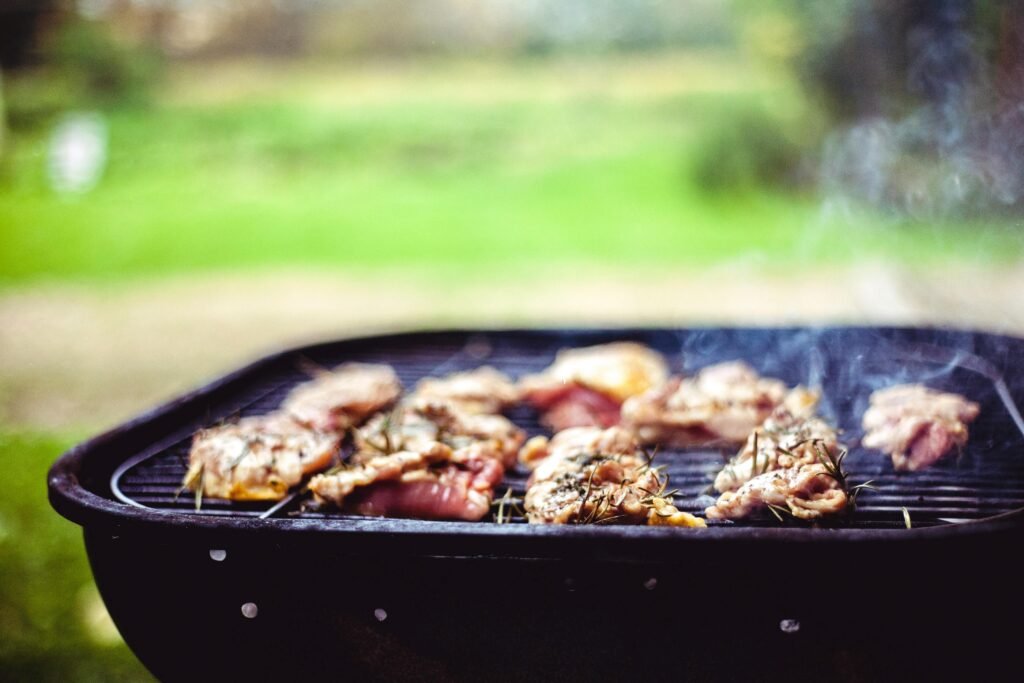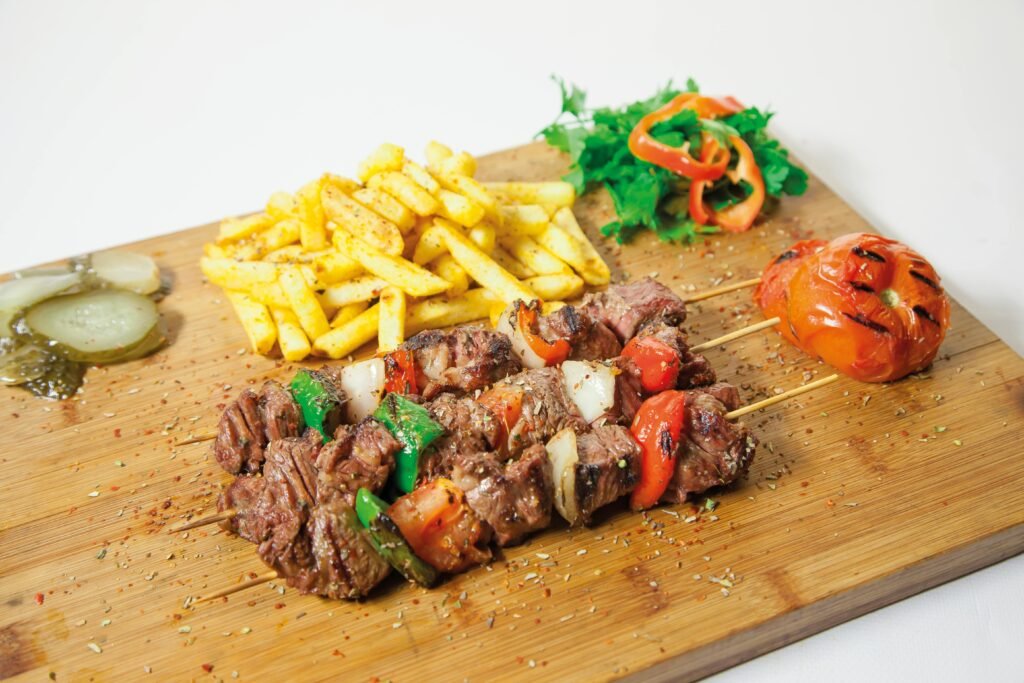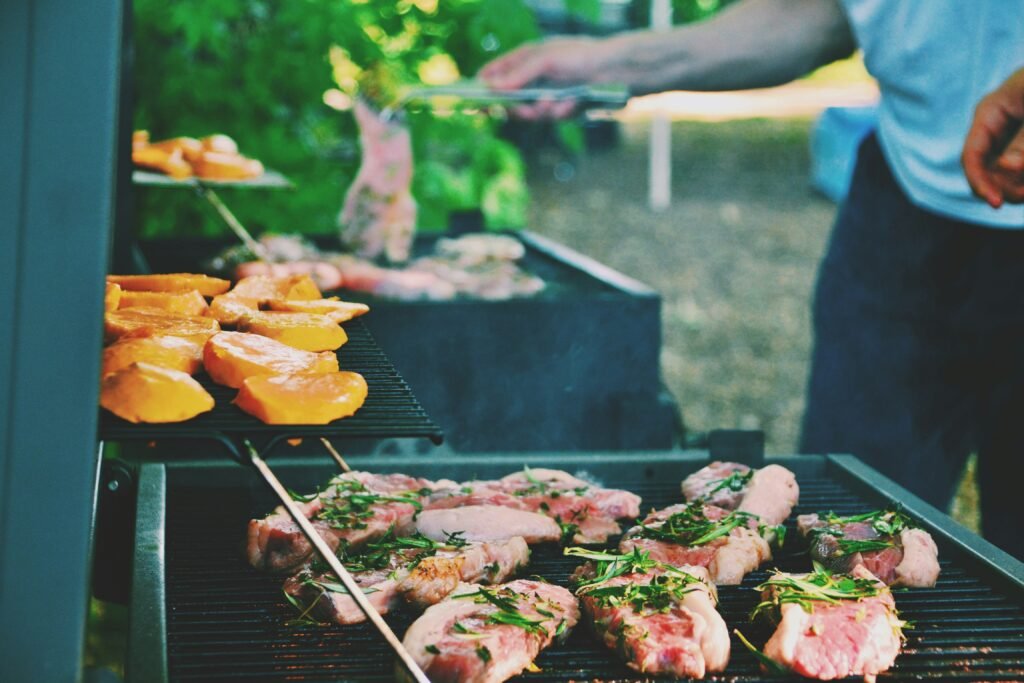Have you ever wondered how our ancestors managed to preserve meat and other foods before the advent of modern refrigeration? Well, one of the oldest, and quite frankly most delicious, methods is smoking. Today, we’re not just talking about preserving food but savoring it in a way that elevates simple ingredients into culinary masterpieces.

This image is property of images.pexels.com.
Why Smoked Foods?
Let’s start by discussing why we adore smoked foods. It’s not just about preservation anymore; it’s a flavor adventure. The smoky aroma and the tender, juicy texture you achieve through smoking are unparalleled. Add to that the subtle layers of flavors from different woods, herbs, and spices, and you’ve got a treat for the taste buds.
The Basics of Smoking
Types of Smokers
There’s a variety of smokers available, and choosing one depends on our needs, space, and, of course, budget. Here are the main types:
| Type of Smoker | Description |
|---|---|
| Charcoal Smokers | Traditional and offer a deep, rich flavor but require constant attention to maintain the right temperature. |
| Electric Smokers | Easiest to use with precise temperature control, ideal for beginners. |
| Pellet Smokers | Use compressed wood pellets, offer great flavor, and maintain consistent temperature well. |
| Propane Smokers | Convenient and portable, though they may not provide as much flavor as charcoal or pellets. |
Each type has its pros and cons, so it’s about finding what works best for us.
Types of Wood
Different woods impart different flavors. Here are some popular choices:
| Wood Type | Flavor Profile | Best For |
|---|---|---|
| Hickory | Strong, smoky | Pork, beef |
| Mesquite | Intense, earthy | Beef, game meats |
| Applewood | Sweet, fruity | Poultry, pork |
| Cherrywood | Mild, sweet | Pork, poultry, fish |
| Oak | Robust, versatile | Almost anything |
We recommend experimenting with a few different types to find our personal favorite.
Essential Tips for Smoking
Temperature Control
The secret to perfect smoking lies in managing the temperature. For most recipes, maintaining a temp between 225°F and 250°F works well. Invest in a good quality thermometer to monitor both the internal temperature of the food and the smoker. Trust us, it’s worth it.
Prepping the Meat
Before we throw just any meat on the smoker, it’s crucial to prep it properly. This involves some trimming, seasoning, and sometimes brining or marinating.
The Magic of Rubs and Marinades
Our rub or marinade is what’ll set our smoked dish apart. Here are a couple of basic recipes to consider:
Dry Rub for Pork
-
Ingredients:
- 1/4 cup brown sugar
- 1/4 cup paprika
- 2 tbsp black pepper
- 2 tbsp salt
- 1 tbsp chili powder
- 1 tbsp garlic powder
- 1 tbsp onion powder
- 1 tsp cayenne pepper
-
Instructions: Mix all ingredients in a bowl and generously apply to pork shoulder or ribs.
Marinade for Chicken
-
Ingredients:
- 1/2 cup olive oil
- 1/4 cup soy sauce
- 1/4 cup honey
- 3 garlic cloves, minced
- Juice of 1 lemon
- 1 tbsp black pepper
-
Instructions: Combine all ingredients in a resealable plastic bag. Add chicken pieces, seal, and refrigerate for at least 4 hours.
Classic Smoked Recipes
Smoked Brisket
Brisket is the holy grail of smoked meats. When done right, it’s a melt-in-your-mouth delight.
Ingredients
- 1 whole beef brisket (around 12-14 pounds)
- 1/4 cup kosher salt
- 1/4 cup black pepper
- 2 tbsp garlic powder
- 2 tbsp onion powder
- 1/4 cup mustard (as a binder)
Instructions
-
Prep the Brisket: Trim the brisket to remove excess fat, leaving about 1/4 inch of fat cap for flavor. Rub mustard all over as a binder and then apply the salt, pepper, garlic powder, and onion powder mix liberally.
-
Preheat Smoker: Set our smoker to 225°F using our wood of choice (oak is fantastic for brisket).
-
Smoke It: Place the brisket fat side up on the smoker. Smoke until the internal temperature reaches around 165°F. This phase typically takes about 8 hours.
-
Wrap It Up: Wrap the brisket tightly in butcher paper or foil and place it back on the smoker. Continue smoking until it reaches an internal temperature of 203°F.
-
Rest and Slice: Let the brisket rest for at least an hour before slicing. This step is crucial, allowing the juices to redistribute.
Smoked Salmon
Smoking salmon transforms this humble fish into something extraordinary.
Ingredients
- 2 sides of fresh salmon
- 1/4 cup kosher salt
- 1/4 cup sugar
- 2 tbsp black pepper
- 1 tbsp crushed red pepper flakes
- 1 lemon, thinly sliced
- Fresh dill (optional)
Instructions
-
Prep the Salmon: Rinse and pat dry the salmon. Mix the salt, sugar, black pepper, and red pepper flakes. Rub this mix generously over the salmon sides. Lay lemon slices and dill over the top if using.
-
Cure the Salmon: Lay the salmon on a sheet pan, cover it with plastic wrap, and refrigerate for at least 4 hours, preferably overnight.
-
Prepare the Smoker: Preheat our smoker to 225°F.
-
Smoke It: Rinse the salmon to remove the cure, pat it dry, and place it on the smoker. Smoke for 2-3 hours until the internal temperature reaches 145°F.
-
Serve: Enjoy it hot or cold; it’s delightful either way.
Smoked Vegetables
Who says smokers are just for meat? Smoking vegetables adds a unique depth of flavor.
Ingredients
- 1 large eggplant, sliced into rounds
- 2 zucchinis, sliced lengthwise
- 2 red bell peppers, halved
- Olive oil
- Salt and pepper
- Fresh herbs (thyme, rosemary, or basil)
Instructions
-
Preheat Smoker: Set our smoker to 225°F.
-
Prep the Veggies: Brush the vegetables with olive oil and season with salt, pepper, and fresh herbs.
-
Smoke: Arrange the veggies on the smoker. Smoke for about 1 hour or until they are tender and have a lovely smoky aroma.
-
Serve: These can be served hot as a side dish or cold in a salad.

This image is property of images.pexels.com.
Tips for Achieving the Best Results
Maintain the Smoke
We want to maintain a thin, blue smoke rather than thick, billowing clouds. The former adds that perfect smoky flavor without overwhelming our food.
Don’t Peek
As tempting as it might be to keep checking, resist the urge to peek too often. Every time we open the smoker, we lose precious heat and smoke.
Rest the Meat
After all that hard work, let the meat rest. This allows the juices to redistribute, leading to a tender and juicy bite.
Troubleshooting Common Issues
Meat Too Dry
This usually means it was cooked at too high a temperature or for too long. Next time, keep a close eye on our internal temperatures.
Bitter Taste
Bitter flavors often come from using too much smoke or the wrong type of wood. Try using a milder wood and ensure that our smoke is thin and blue.
Uneven Cooking
Uneven cooking can result from fluctuating temperatures or an improperly prepped smoker. Make sure our smoker is preheated properly and check for any hot spots.

This image is property of images.pexels.com.
Experiment and Enjoy
The beauty of smoking is that it’s as much art as it is science. Don’t be afraid to try new recipes, tweak existing ones, or even create our own. Smoking is all about experimenting and finding what pleases our palate the most.
Whether we’re using a high-end electric smoker or a makeshift charcoal setup, the end result can be extraordinary. The joy of sharing and savoring a plate of perfectly smoked brisket or a fillet of succulent smoked salmon is irreplaceable. What could be better than gathering around with friends and family, biting into that tender, smoky goodness, and knowing that we created it from scratch?
In the end, it’s about enjoying the process as much as the final product. So dust off that smoker, pick out some choice cuts, and let’s get smoking!



